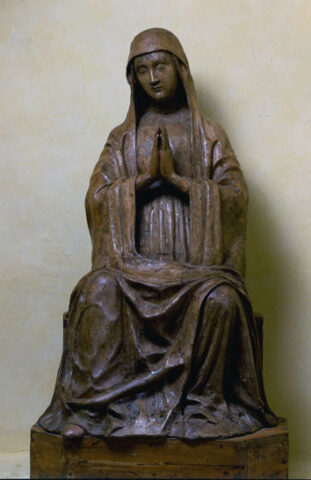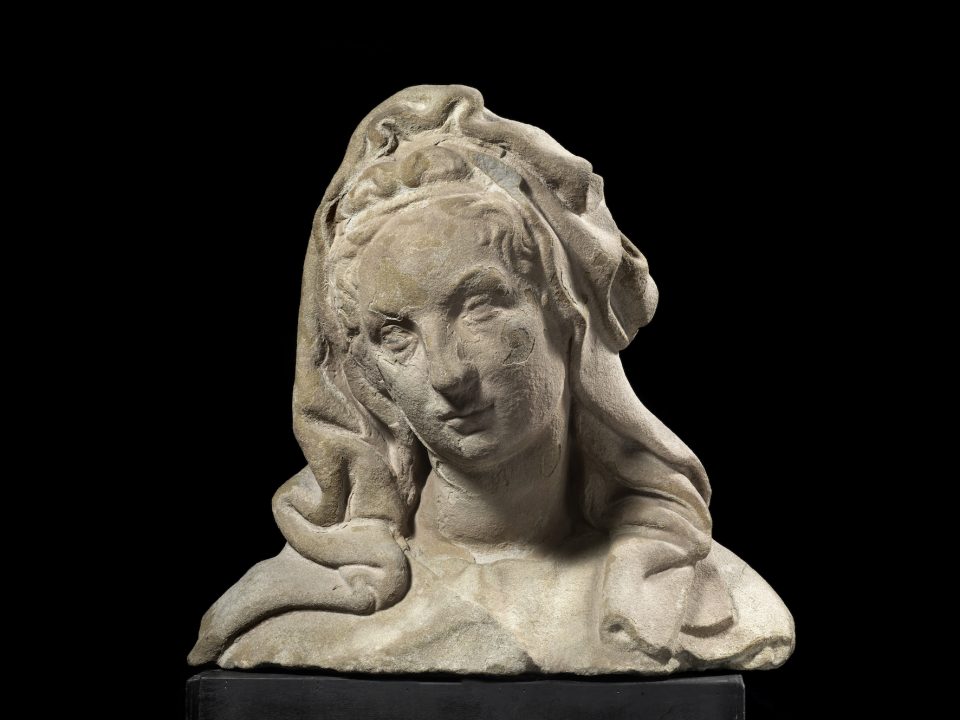GIOVANNI ZEBELLANA
Verona, documented from 1485 to 1505
Praying Madonna on the throne
carved and sculpted fruit wood, cm 105 height
The sculpture comes from an important aristocratic Venetian collection, where it was traditionally attributed to Niccolò Giolfino, Verona-born sculptor who was active in the second half of the Fifteenth century.
The Virgin, seated on the throne, is depicted according to the Venetian iconographic custom of the second half of the Fifteenth century. This is recognizable by elements such as the gently joined hands, the typical veil resting on the slightly reclined face. The gentle expression of the face, the splendid and nervous rippling of the draping of the dress, forming deep folds between the slightly spread knees, suggest that this image of the Virgin may be attributed to the circle of Giovanni Zabellana, whose late-Fifteenth century language here unfolds in a volumetrically more airy manner; in the crumpled and dented drapery, which appears almost like aluminium, one can see traces of the profound lessons learned from his contemporary colleague, Andrea Mantegna.
From the sixth decade of the fifteenth century, Giovanni Zebellana became the most important wood sculptor in and around Verona, and subsequently replaced the remaining late-gothic tradition of the Moranzone family, with a more modern and fashionable style, in keeping with the updated renaissance language.





